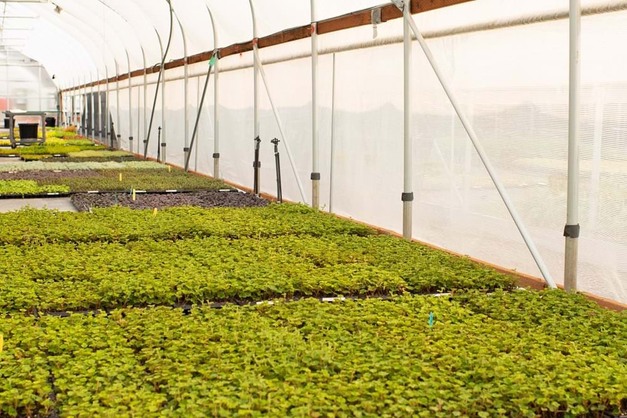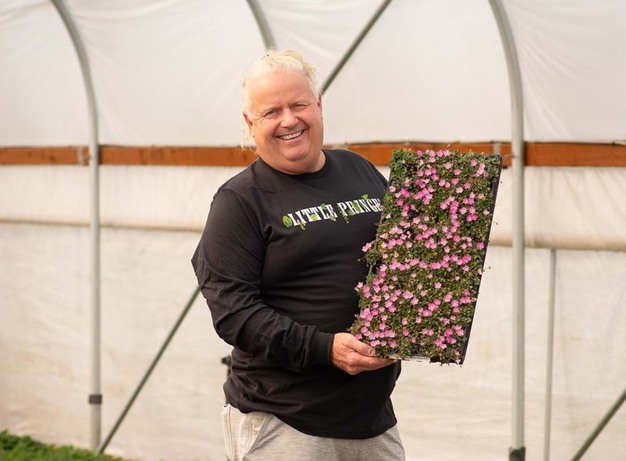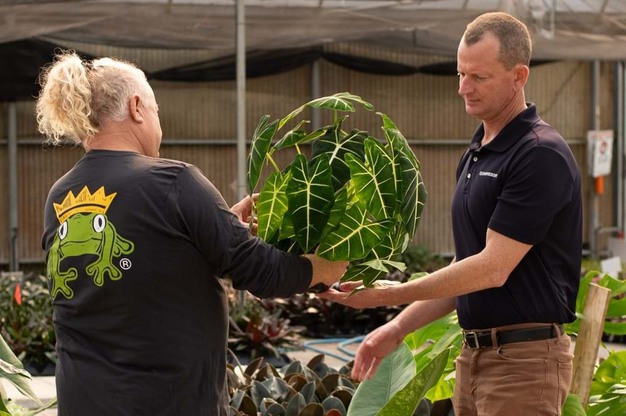Imagine your goal is to produce the most beautiful houseplants anyone ever received. Your offer to customers is to reliably provide them with rare, sensitive varieties that can experience 95% die-off if you don’t get the nursery climate just right. You’re concerned about sustainability (“Every day is Earth Day”) and being responsible for your environmental impact. Now, imagine you set out to do all that in a region that experienced 119°F in 2021 (48°C) and can reach –15°F (-26°C) in the winter. Welcome to Mark Leichty’s world.

Mark is the Director of Business Development at Little Prince of Oregon, which is located just south of Portland, Oregon. If you’re curious to see what they’re achieving, take a look at this unboxing. Five pot plants get influencer treatment on the GardenAnswer YouTube channel. The plants looked truly terrific and were boxed with meticulous detail to ensure they made it safely to the happy customer.
Mark joined Little Prince of Oregon ten years ago, so he’s been a part of the small team there for about half the company’s lifetime. He is part of an operation that cultivates 2,500 species, from liners to herbaceous perennials to houseplants. He clearly loves what he does.
“It’s an amazing place to work,” he says. “I get to visit beautiful gardens and nurseries, and everyone here is empowered to make Little Price a better place. I can’t imagine a more fun place to work.”
 Mark Leichty, Director of Business Development at Little Prince of Oregon
Mark Leichty, Director of Business Development at Little Prince of Oregon
“We’ve had extreme heat this year,” he explains.
Fortunately, the spring growing period is more productive and cooler for the staff thanks to a Harmony climate screen set-up that Little Prince installed five years ago in the house-growing Hellebores. Hellebores are one of the more sensitive plants grown at Little Prince.
“Originally, I chose to use a layer of Harmony 3915 O E over the top of the poly-covered greenhouse in order to enhance the light quality,” he says. “It felt brighter, and the quality was improved,” he adds.
But he found there were further significant benefits. “There was consistent light and a more comfortable climate due to it being cooler. In fact, the cooling has been the biggest benefit,” he explains.
Little Prince sells and grows year-round, but their busy season is March to June.
The company uses black shade for additional protection in the high summer period, but black shade costs have risen, and Mark has seen a decline in its longevity.
“Some growers only get three years out of black shade,” he says. “It gets brittle and starts to split apart. On the other hand, the Harmony screen still looks very nice after five years, and its longevity compared to black shade is significant,” he adds.
We ask how satisfied Mark has been overall with his decision to use Harmony at Little Prince.

The Little Prince team raises rare and fragile species, and the margin for error is tiny in many cases. “Some crops are very difficult,” he says. “Crop failure is often due to an environmental issue, not a disease, but more climate factors such as humidity and overwatering can be a problem.”
It’s been a steep learning curve at times: “With stage 3 tissue culture, we’ve seen significant crop loss before, but we learn from it – you learn so much more from your failures than your successes.”
Mark’s advice to other growers is to be informed of rebates that are available and to leverage shade screens to reduce temperatures in their greenhouses for a more comfortable climate during the hotter months.
“If growers need shade and cooling and don’t want the additional cost of investing in a cooling system, I’d recommend they install Harmony screens,” he adds.
For more information:
Ludvig Svensson
info@ludvigsvensson.com
www.ludvigsvensson.com
